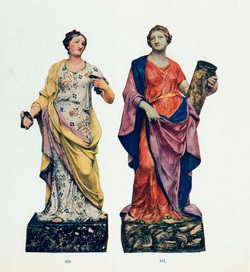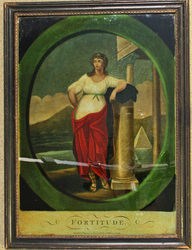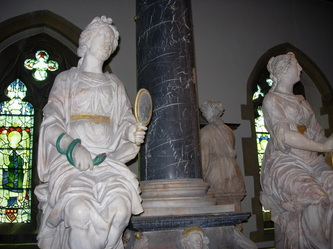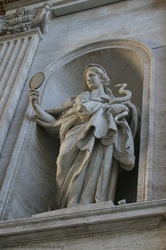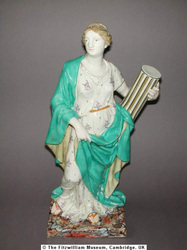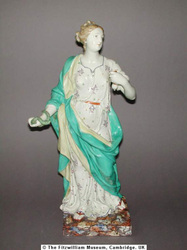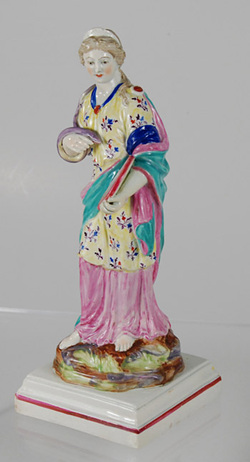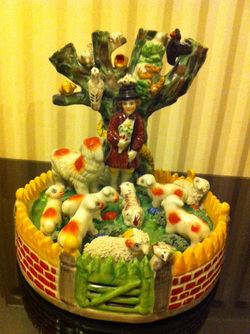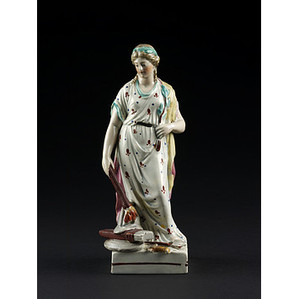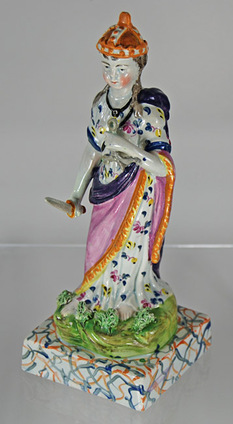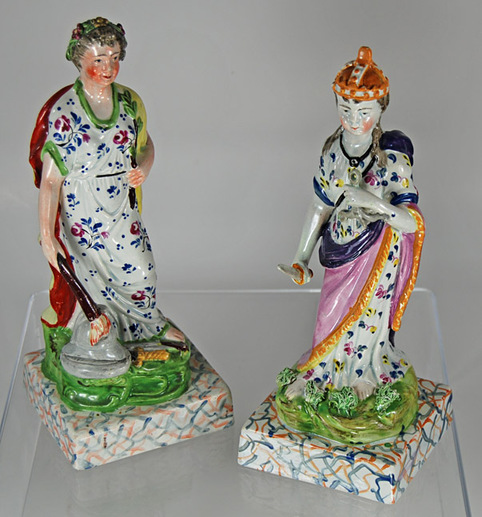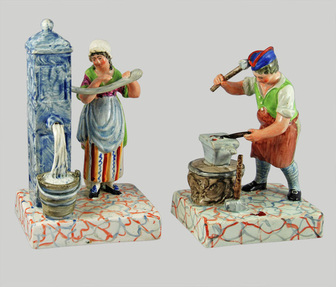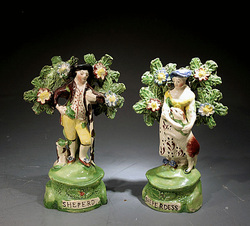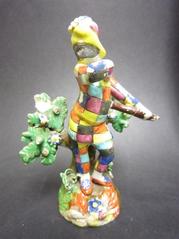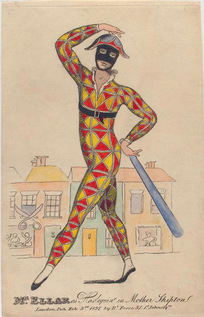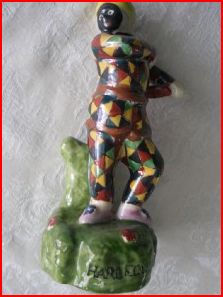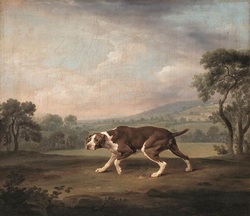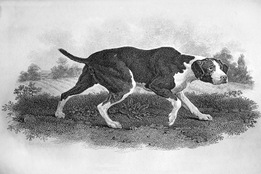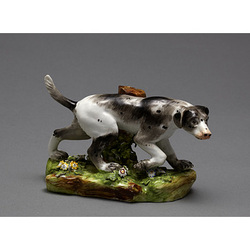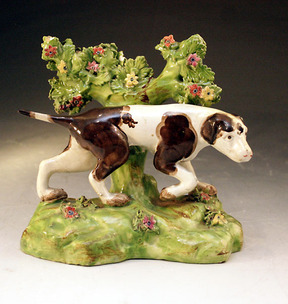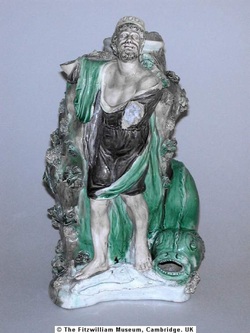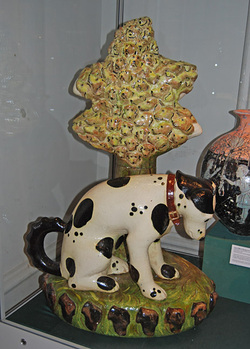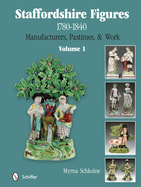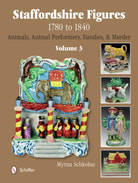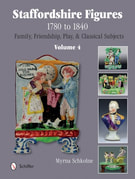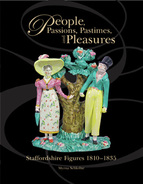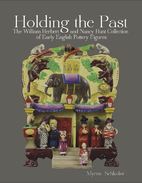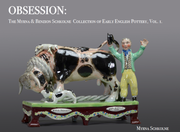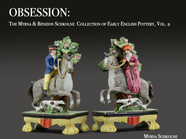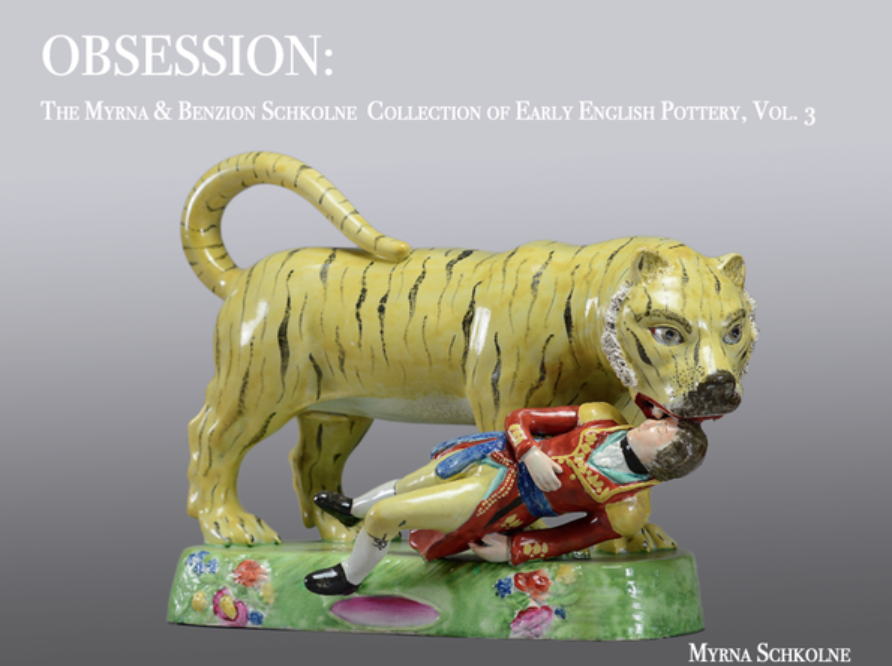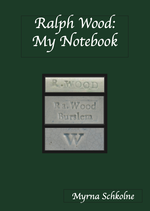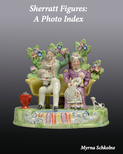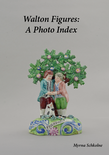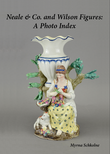Figures of Prudence and Fortitude were among the many allegorical figures that were popular in the neoclassical period. Images, and three-dimensional representations abounded, so it is not surprising to find them also commemorated in clay. The design source for the figures is probably a plaster obtained from a London plaster maker.
While Prudence and Fortitude are today associated with Enoch Wood/Wood and Caldwell, Ralph Wedgwood also had a go at making these ladies. The two figures shown above from the Earle Collection are apparently marked WEDGWOOD. The WEDGWOOD figures of Prudence and Fortitude are indistinguishable from examples marked E. WOOD. This is not surprising, as Ralph Wedgwood helped himself to others' molds on sundry ocassions. But, in the absence of a mark, Prudence and Fortitude are commonly attributed to either Enoch Wood or Wood and Caldwell. Falkner notes a pair marked E. WOOD in a private collection. [2] Also, a pair impressed E. WOOD sold at Sotheby's New York, 29 January 1987, lot 378, the Collection of the Rev. Benjamin Lake. An example of Fortitude, bronze-glazed and impressed WOOD & CALDWELL, sold at Bonhams Chester a while ago.
Below are some more examples of Prudence and Fortitude:
1. Hall, James, Dictionary of Subjects & Symbols in Art, pp. 127, 254
2. Falkner, Frank, The Wood Family of Burslem, p.59
